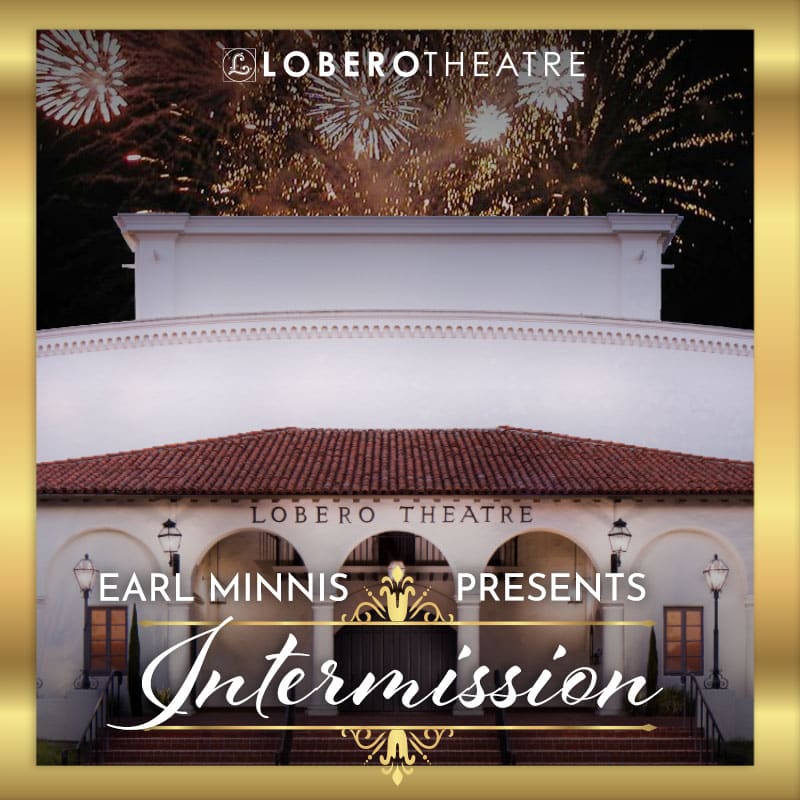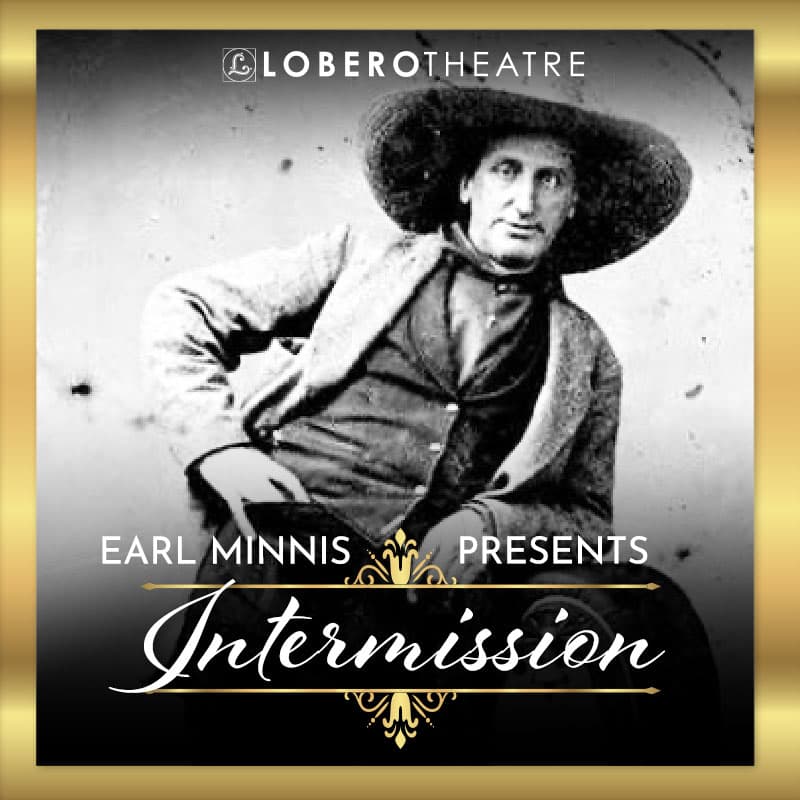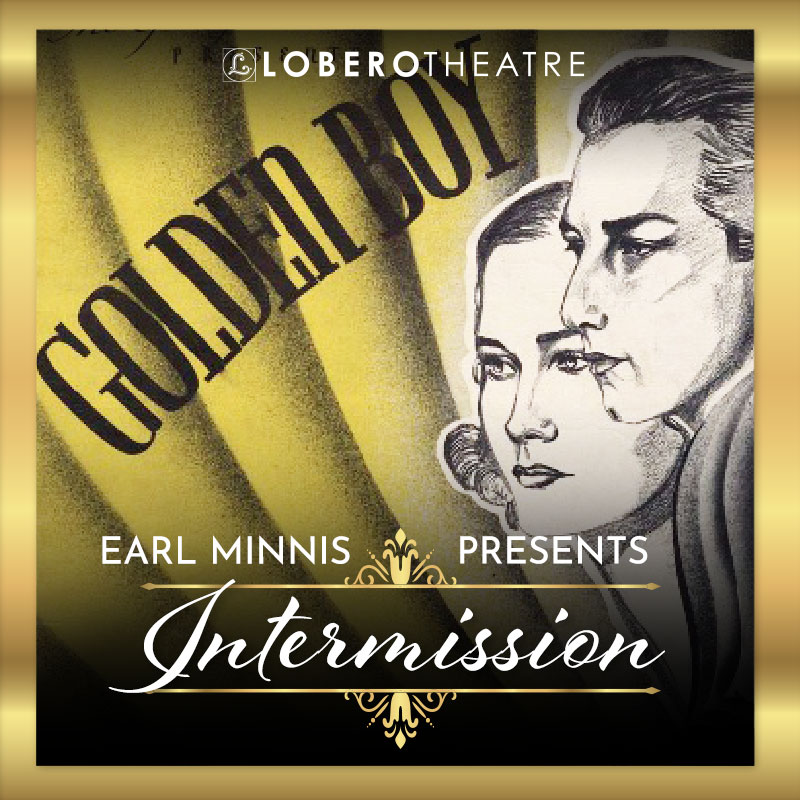Giuseppe (Jose) Lobero really knew how to throw a party. Starting with the Lobero Theatre’s grand opening in February 1873, Lobero used his marketing genius to ensure that the theatre was the center of Santa Barbara’s cultural life.
“Grand Balls” were his specialty, and the one he hosted for Santa Barbarians on July 4, 1874, helped promote the young city – and its showpiece theatre/opera house – to all of Southern California.
The July 4th festivities began on a dusty State Street with a parade of carts and horseback riders. In attendance was a Los Angeles Daily Herald correspondent who documented the event with a satirical wit reminiscent of Mark Twain.
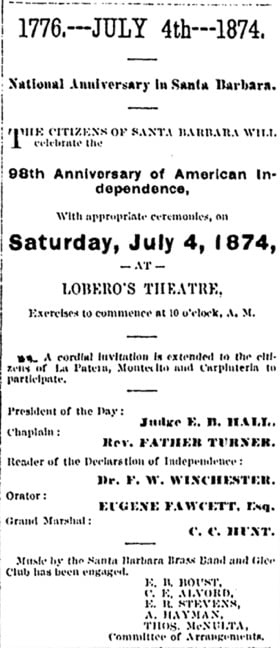
“At last, they started – two cars, with some of the juvenile fair sex of this city representing the old Colonies and States, and the rear brought up with mounted hoodlums whose name was legion, the whole covered in an immense canopy of dust. They halted at and entered Lobero’s Theatre. The Declaration of Independence was read, some music was indulged in… In the afternoon the Calathumpians paraded the streets in queer and grotesque costumes, mounted on appropriate animals and riding in vehicles to correspond. The whole concluded with a grand ball at Lobero’s, a splendid supper, of course, and two dollars and a half, or we stay out.”
What, you might ask, is a “Calathumpian”? According to Mirriam-Webster, “In the 19th century, the noun ‘calathumpian’ was used in the U.S. of boisterous roisterers who had their own makeshift New Year’s parade. Their band instruments consisted of crude noisemakers such as pots, tin horns, and cowbells.”
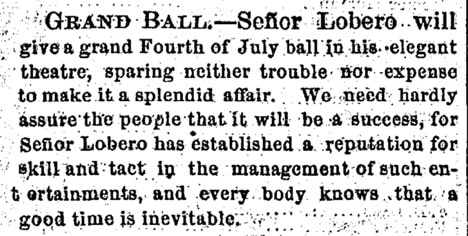
There’s no record of the specific entertainment or food provided at the July 4, 1874 ball, but if it was anything like other Lobero grand balls, it featured a cavernous auditorium where all the portable chairs had been removed to allow for dancing, tables on the edges of the room laden with foods, and an orchestra featuring Santa Barbara musicians on stage. All would be brightly lit, as Lobero’s Theatre was high-tech for the day and gas lighting had been installed in the new building in 1873.
Sources:
